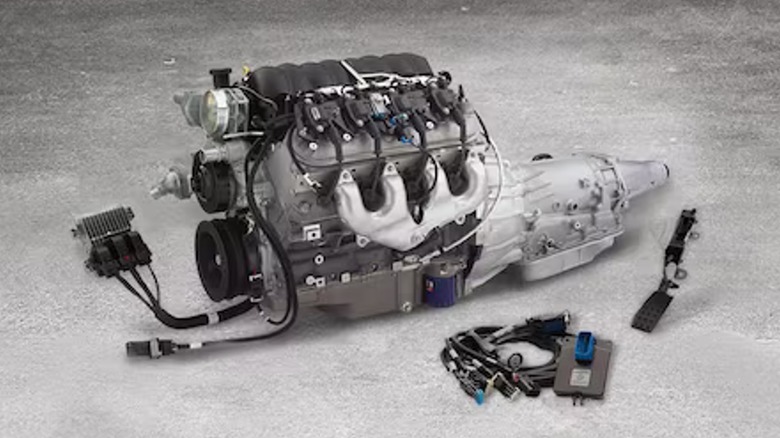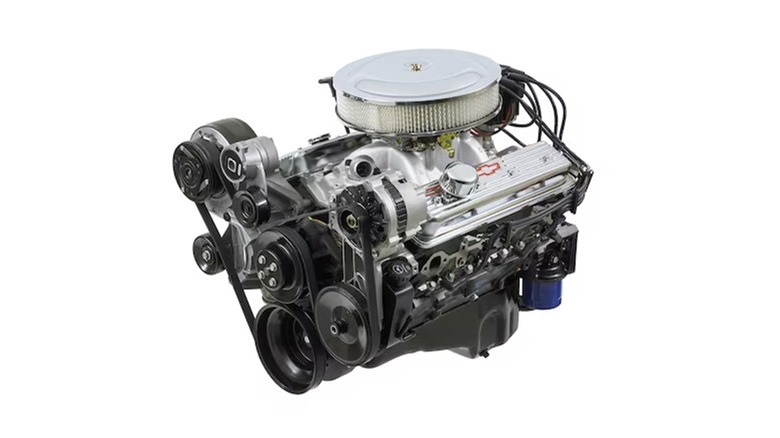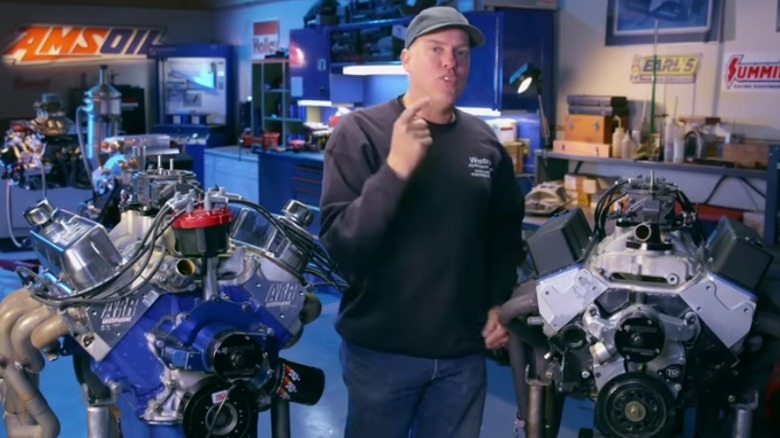350 Chevy Vs Ford 351W: Which Is The Better Engine?
When buying a truck, one of the most important factors to take into account is the quality of the engine. You can slap all the extra features you want on it, but no amount of bells and whistles can amount to a quality motor. This is every bit as true now as it has been for decades. When it comes to American-made trucks, few names stand out more than Chevy and Ford. Both manufacturers have been building quality machines for over a hundred years, and auto forums are full of fans arguing which is the superior brand.
One of the biggest times the two manufacturers butted heads was back in the 20th century when each of them produced a small-block V8 engine that promised big power at an affordable price. The Ford 351 Windsor and the 350 Chevy weren't exactly the biggest and baddest engines on offer from either company at the time, but they still stood out to budget-minded buyers for their relative price-to-performance ratio. This is why many consider the 351W among the best engines ever put in a Ford Truck and the Chevy 350 one of the most popular engines ever made. Even after all this time later, truck aficionados debate which is better.
Comparing the specs
In order to get a better look at the difference between these engines, we first have to take a look at the specs offered by each.
The Chevy 350 is a 350 cubic inch small-block V8 that was in production from 1955 to 2002. It's a 5.7-liter engine with a 4.00 and 3.48-inch bore and stroke. There is some slight variation in the horsepower offered by the engine depending on the year, make, and model of the truck, with it typically falling between 145 and 370. This engine is also rated for up to 380 lb-ft of torque.
Now, let's take a look at the Ford 351 Windsor. This is a 351 cubic-inch small-block V8 that was in production from 1969 until 1997. It's a 5.8-liter engine used in a wide range of Ford's most popular trucks. The vehicles that used it produced between 150 and 240 net horsepower and up to 315 lb-ft of torque.
So, on paper, it looks like the stock Chevy is in the lead across most metrics, but how about when it comes to high-end performance?
Comparing performance
Hot Rod magazine published an issue in 1995 (via MotorTrend), where auto journalists Rob Kinnin and Jeff Smith put these two engines head-to-head in a series of tests. This was near the height of both models' popularity, with the most advanced variations on offer from both manufacturers.
They set a budget for modifications and performed a "shootout" competition, where both parties tried to get the most horsepower possible out of their respective engine. "Each engine builder started with a rebuildable core, which had to be bored and fitted with new pistons. Displacement had to fall between 340 and 383 cubic inches. Everything but the core parts (block, heads, crank, rods, and so on) had to be new and available by mail-order. We did this to avoid the situation of the unobtainable core engine." These rules meant that the engines weren't exactly stock but stood an equal chance of improvement across the board.
The end result once again favored the Chevy. It had a higher peak horsepower while maintaining a respectable amount of torque. Even so, Kinnin and Smith noted that the results were very close and that both manufacturers had built impressive motors. So, while the Chevy once again edged out the Ford, it appears that the margin of victory was slimmer than most might have expected.


